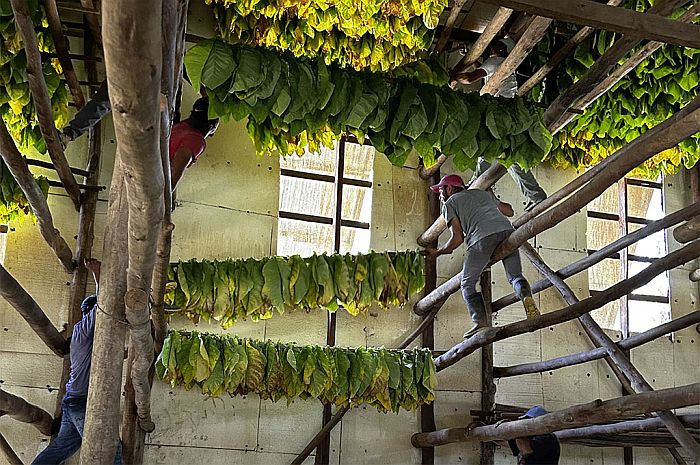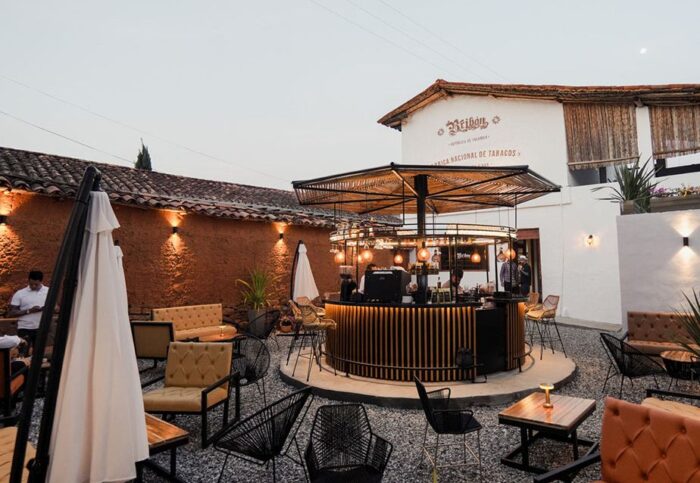The following post about cigar tours in Central America and South America is a guest article from Sebastian Gollas, a well-known expert who contributes to Cigar Journal in Europe and works for the importer StarkeZigarren, based in Berlin. We’ve only touched on cigars now and then in this publication, even though most of them sold around the world come from Latin America. We’ve tried some great ones from Honduras and Nicaragua in our travels but Sebastian has the scoop on so much more!

Few Berliners enjoy leaving their homes in the winter. Some friends you don’t see for months. Our team shivers through the German winter in cold rooms. The ground floor where the cigar importer is located can never be heated properly. The historic building from the Gründerzeit period with its high ceilings and outdated gas heating system just can’t keep up. From October to April, it’s a tough time for the team. A breakout is needed!
Morale rises in January, because the team members have been invited to Honduras by the country’s second-largest tobacco grower. None of the three-person team had ever been to the Central American country.
Cigars From Nicaragua and Honduras
the trip leads through the USA and Mexico to Nicaragua. The destination: Estelí, a small city in the heart of Nicaragua. But this inconspicuous little town has become the center of the cigar world over the past few decades. Nicaragua has overtaken Cuba and is on the verge of surpassing the Dominican Republic in cigar production.
However, Estelí has a problem: there is a lack of skilled workers. Many people who once worked in the large factories have left the country for a better life in the USA. The refugee flow has slowed under the drastic measures of the Trump administration, but no one has returned. It’s estimated that two million people cross the border between Nicaragua and Honduras every year in search of a better—or at least safer—life.
After a few days with the renowned cigar manufacturer “Rojas Cigars” in Estelí, the StarkeZigarren team crosses that very border on foot. What awaits us on the other side? In Honduras, we’re warmly welcomed by Justo Eiroa. By then, we’ve already bypassed the Honduran immigration office. But without stamps in our passports, we’d have problems when leaving the country. So, we have to head back to the immigration barracks.

According to the Honduran Ministry of Economic Development, the goal is to create 3,000 new jobs. The factory is designed to produce 10 million cigars per year. Officially, the company operates in Honduras under the name “My Father Cigars Honduras.” Since February 2025, they’ve been rolling My Father Blue cigars there, the first cigars ever made by My Father Cigars in Honduras.
Why are manufacturers like the Garcia family from My Father moving to Honduras? The reasons are clear: Nicaragua lacks both labor and land for tobacco cultivation. In contrast, workers in Honduras stay loyal to factories for longer and are highly productive, offsetting the higher wages.
When it comes to tobacco quality, Honduras is on par with Nicaragua. The Honduran government seems to welcome investors. The only drawback remains the high crime rate. Overall, Honduras serves as a strategic backup for major producers, It is a form of risk diversification, especially since no one knows how things will develop in Nicaragua thanks to the entrenched dictatorship and a worsening economy that has a lot of parallels with Venezuela.
What’s Going On With Cigars in Costa Rica?
After a stop at Victor Calvo in Nicaragua, the journey continues from Managua by small plane to San José. Unlike its neighbors to the north, Costa Rica isn’t well-known for cigars. At this point, Sebastian splits from the team to visit the country’s largest cigar factory: Tabacos de Costa Rica.
The factory in the Puriscal region produces around 3 million cigars per year. Most of them go directly to retailers and lounges in the USA. At the moment, they are producing 70,000 cigars for a major lounge in Tampa, Florida. Not much else happens in the mountain village of Puriscal. Due to steep terrain, tobacco is no longer grown there, so they transport it from other areas.
Tobacco in Colombia and Peru
Since there’s little to discover in Panama when it comes to cigars, Sebastian soon heads to Colombia. The center of cigar production there is Piedecuesta, in the Santander department. In reality, Piedecuesta is better known for its giant ants than for cigars. But producers like José Correa and Chicamocha are based there.
More exciting, however, is a very young factory in Barichara. Barichara is often called out as the most beautiful village in Colombia. It is also home to the country’s most beautiful cigar factory: Bribón Cigars.

The small factory is still in its early stages. Currently, it produces very mild cigars made from Colombian Cubita tobacco—a world first and exciting news for aficionados around the globe. Bribón Cigars even runs an elegant cigar lounge in the trendy district of Usaquén in Bogota.
Sadly, it’s eventually time to say goodbye to the charismatic owners, Juan Camilo and Francis. The cigar journey comes to an end when we get to our last stop, Peru.
There, an Italian man is fighting for a share of the cigar market at the edge of the Amazon Basin. Gennaro Lettieri is a one-man show. In his Peruvian cigar factory, Tabacalera del Oriente, he takes care of everything, from planting tobacco to producing cigars and boxes. Despite all the challenges, he’s built an excellent reputation for Peruvian tobacco. Today, even major brands like Davidoff process his tobacco from the Amazon region.
After smoking good cigars in the tropical heat, it was time to head back to the office in dreary northern Europe. At least we were bringing back some interesting cigars from their source, as well as plenty of sunny memories.
– Cigar tours story and photos by Sebastian Gollas
For more information about StarkeZigarren, call +49 3056596618 in Berlin or go to www.starkezigarren.de
Check out Luxury Latin America for the top places to stay in Honduras, Nicaragua, Colombia, and Peru in our best luxury hotels section.

